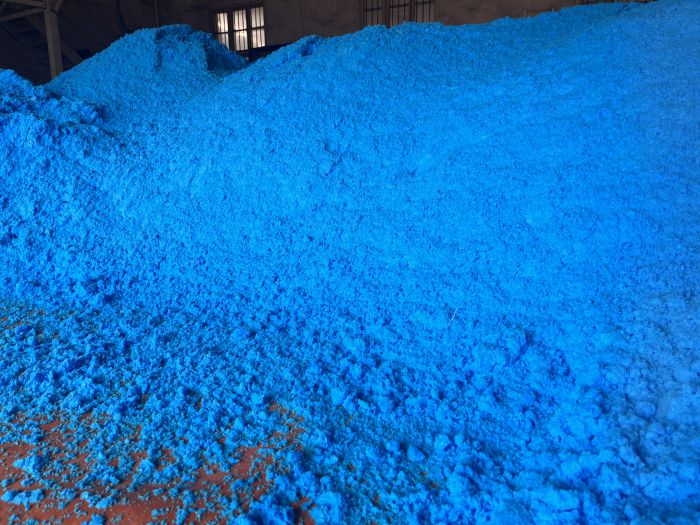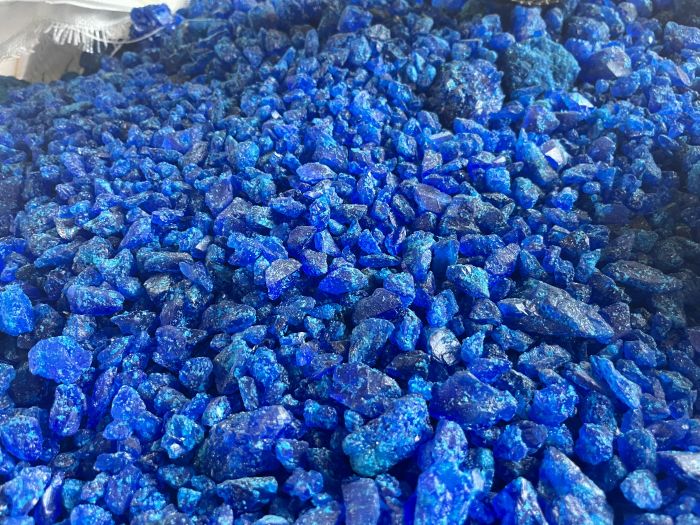Obviously, copper sulphate is used for a variety of different purposes.
It is an etching agent, a preservative for wood, and it is also a fungicide and herbicide. It is important to know how to properly use it, as it can be harmful if you do not.

Algicide
Whether you're an avid gardener or simply have a swimming pool, copper sulfate is one of the most effective algaecides around. In fact, it's one of the most common types of chemicals used in agriculture today.
It's easy to find, too. There are more than 6,000 consumer products on the market containing copper sulfate. Fortunately, it's not very toxic when it's applied in a low concentration. However, when you apply it in high concentrations, you're opening up a whole new set of problems.
Some of the most commonly encountered problems with copper sulfate include severe pain and vomiting, nausea, and diarrhea. The chemical is also very toxic to fish, so it's important not to apply it to ponds containing fish.
Fungicide
Agricultural uses of copper sulphate include fungicide, seed treatment, and insecticide. In addition to these uses, it has also been used as an antimicrobial for crops.
There are a few important things to know about using copper sulfate. Firstly, it is toxic to fish. You should avoid applying it directly to water, but you can spray it onto your plants. If you do, make sure you mix it with a bit of water before you use it. Then, keep in mind that you can't apply it more than once every 48 hours.
The use of copper sulphate as a fungicide is quite widespread. It is used in a wide variety of industries, including agriculture, dyeing, and electroplating. In addition, copper sulfate is used in the production of a number of consumer products. It is often sold in powder form, and can be found in a number of stores.
Herbicide
Using Copper Sulphate herbicide is a good way to control algae in water bodies. It's an effective fungicide, bactericide, and nematicide, and it's also a very effective weed killer. In fact, it's one of the most popular herbicides for organic farmers.
It's a naturally occurring ionic compound, and when mixed with water, it forms a thick foam that kills plants and weeds. It's a highly effective oxidizer, and it works by interacting with proteins in fungus.
It's safe for most people to use, but there are some precautions to be taken.
For example, it is not advisable to apply this substance more than once every 48 hours. This is because it can harm both human and animal health.
Etching agent
Using an etching agent with copper sulphate is a great way to etch aluminum and zinc. It's a non-corrosive process that won't harm skin or clothing. It's also a cheaper alternative to electro-etching.
A copper sulphate etching solution is created with copper sulfate and water. Mix the two ingredients in warm water and then saturate the solution. It's best to keep the concentration of coppersulfate to a minimum. This will allow for a longer etching bath.
The etching agent with copper sulphate works to dissolve copper atoms. This allows the plate to be etched to a more consistent degree. This is important because it allows an artist to have more control over the image.
Wood preservative
Various types of wood preservatives are available in the market. The effectiveness of a wood preservative treatment depends on the amount of chemical absorbed, moisture content and the distribution within the wood. Among these, the most effective are those based on copper.
The primary fungicide in wood preservative solution is a copper ethanolamine complex. This combination enables the effectives against the most important wood decay fungi. The copper ions are bound to the cell wall of the wood. The resulting change in the pH of the treated wood results in a trivalent ion in situ. This solution is expected to provide long-term efficacy.
In addition to the primary fungicide, there are other chemicals that are used for internal and external treatments. These include coper naphthenate, boron salt, boric acid and disodium octaborate tetrahydrate.
Children's exposure risk
Often, people mistake copper sulfate as a safe compound. However, it can be quite harmful to humans and animals. The toxicity of copper sulfate is caused by its corrosive effects on the skin and mucous membranes. It is a transition metal (d block element) that binds to proteins in the body. The human body is able to control total body copper levels through efficient mechanisms.
Copper sulfate is a common cause of accidental intoxication. It can be inhaled, ingested or absorbed through eye contact or contact with objects that have been contaminated with copper sulfate. The most common route of exposure is through ingestion. Children are at greatest risk for exposure.
China's copper sulfate market has reached 500 billion yuan, and the demand continues to grow. Our company exports thousands of tons of high-quality copper sulfate annually, which is reasonably controlled in price and quality and occupies a certain share in the external market. If there is any demand for copper sulfate, please contact us.


